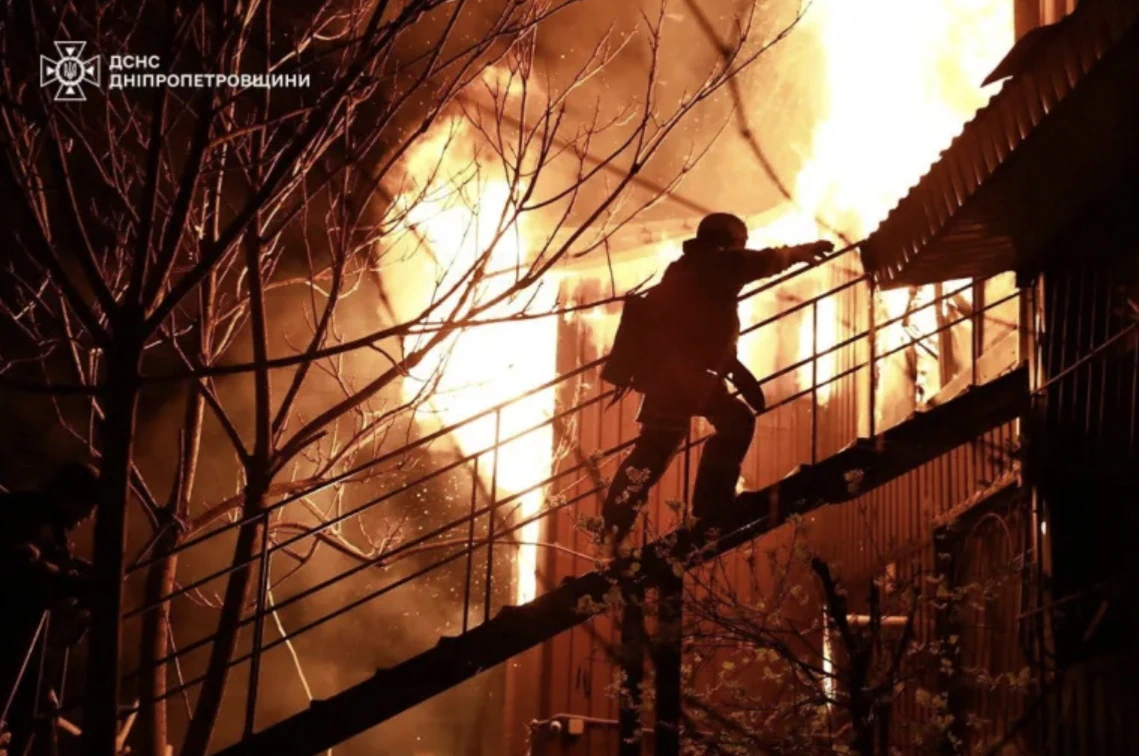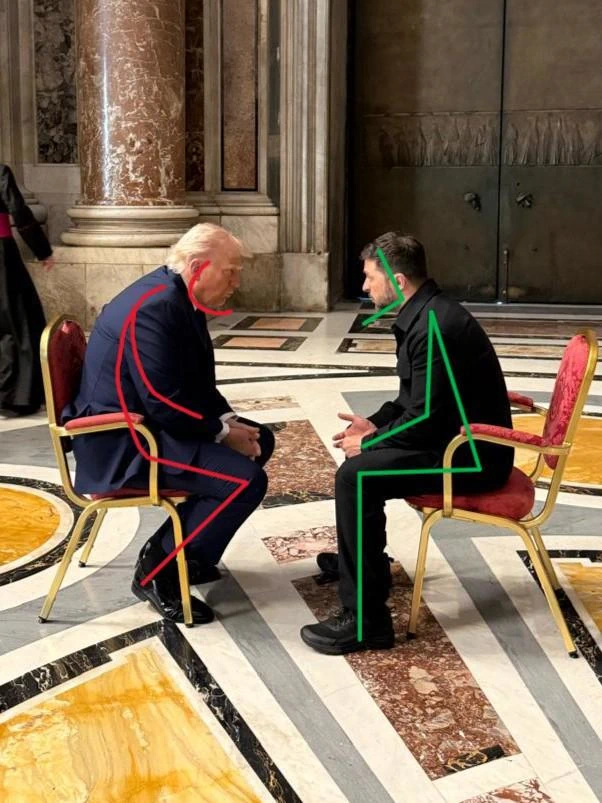On Sunday, April 20th, Russia’s so-called “Easter Truce” officially went into effect, though many warned against placing any real trust in this performative gesture. Despite Putin’s announcement of a 30-hour ceasefire, President Zelenskyy reported nearly 3,000 violations by Russian forces during the period, not just limited to drone and artillery strikes, but including full-scale troop assaults across multiple fronts. It immediately became clear that the "truce" was nothing more than a PR stunt, aimed at creating the illusion of restraint while continuing the war unabated. In good faith, Zelenskyy even suggested extending the ceasefire into a full 30-day halt in fighting, but Russia never formally responded. Conveniently, the stunt also gave Putin a boost in optics with President Trump, who, still fuming over recent spats with Zelenskyy, seemed all too willing to play along with the narrative that Russia was at least “trying” for peace.
On Monday, April 21st, as expected, Russia wasted no time returning to full-scale attacks after its farcical 30-hour "Easter truce" expired. Ukrainian officials reported an overnight barrage of 96 drones and multiple missile strikes targeting the Kharkiv, Dnipropetrovsk, and Cherkasy regions, with Russia unleashing another wave of devastation just hours after pretending to seek peace. President Zelenskyy reiterated Ukraine’s willingness to extend a real ceasefire, proposing a 30-day halt to long-range strikes on civilian infrastructure—but unsurprisingly, Putin declined, justifying continued bombings by again claiming military targets were nearby. (Need we revisit the last two weeks, where this same excuse followed every civilian massacre?) Meanwhile, the Kremlin’s real objective became even clearer: manufacture blame against Ukraine to feed the false narrative Trump could use to excuse Russia’s bad faith. Even as Kyiv and its allies prepared for fresh peace talks in London, Trump continued insisting that a deal would happen "this week," blissfully ignoring the reality that Russia has no intention of ending its war.
 A firefighter works at the site of a Russian drone strike in Dnipro,
Ukraine [File: Handout/Reuters]
A firefighter works at the site of a Russian drone strike in Dnipro,
Ukraine [File: Handout/Reuters]
On Tuesday, the Trump administration’s “final offer” for Ukraine was finally revealed—and it was about what you would expect from this stellar crew. According to Axios, the framework demands a series of concessions that President Zelenskyy has already made clear are entirely off the table, including recognizing the loss of all Ukrainian land currently under Russian occupation. The “deal” also seeks to control Ukraine’s future, barring any future NATO membership, while somehow still failing to offer any real military guarantees in return. And what exactly does Russia have to concede under this so-called agreement? No one really knows—other than that they would apparently agree to stop their unjust invasion (how generous). While the final offer dominated headlines, a massive explosion was also reported at an ammunition depot northeast of Moscow, more than 300 miles from the Ukrainian border. Russia, as usual, claimed the blast was the result of a fire and general incompetence—an explanation they often roll out to downplay Ukraine’s highly effective strikes. Surprisingly, Ukraine didn’t claim responsibility this time, so maybe, just maybe, this one was actually pure Russian ineptitude.
On Wednesday, the day following the release of the “final offer,” it pretty much immediately crashed and burned as Zelenskyy stood his ground, specifically rejecting any proposal that would involve Russia’s illegal occupation of Crimea. In response to Zelenskyy’s stance—something that has been public knowledge as a red line for quite some time—Trump threw a tantrum on Truth Social, claiming Zelenskyy had made “inflammatory statements” by refusing to recognize Crimea as Russian land. Of course, Trump conveniently left out the fact that it was Putin who outright ignored Zelenskyy’s request for a 30-day ceasefire, which could have served as a legitimate base for negotiations. It's also important to note that while Ukraine obviously wasn’t thrilled with this “offer,” neither were the Russians—if you have the time, I highly recommend checking out Preston Stewart’s video, Trump’s Final Offer: Both Sides Hate It. As a veteran, I always appreciate seeing levelheaded military folk tackle these topics, and his work—and support for Ukraine—is absolutely worth a look. As if to underscore where his real loyalty lies, Trump’s administration also skipped sending top officials to the London peace talks, downgrading America's presence while his special envoys instead prepared for their fourth meeting with Putin himself later this week. Meanwhile, the war raged on: Russia struck Kharkiv and Kyiv with another drone and missile barrage, killing at least nine civilians. But again, according to Trump, the real problem is that Ukraine won’t surrender fast enough.
Thursday, Russia unleashed its deadliest barrage on Kyiv in months, killing at least 12 people and injuring over 100 others across the capital. Despite the horror of yet another mass civilian attack—one that included North Korean ballistic missiles—Trump responded by posting on Truth Social a strongly worded message, with “Vladimir, STOP!” being the highlight of the post. Trump also finally clarified what “big concessions” Russia would be making under his so-called final offer: stopping the war, or in other words, not taking all of Ukraine, just the parts they currently occupy. President Zelenskyy, speaking from South Africa, condemned the attacks as some of the most brazen of the war and pointed out the obvious: no real U.S. pressure is being applied on Russia. Trump, meanwhile, seems more interested in pretending progress is around the corner rather than confronting who’s actually prolonging the killing, so nothing new there.
On Friday, Trump again insisted that Russia and Ukraine were “very close to a deal” after his special envoy Steve Witkoff met face-to-face with Putin in Moscow for the fourth time. Russian officials eagerly praised the talks as “constructive and very useful,” but the reality remains the same: nothing fundamental has changed. Trump is still banking on a deeply lopsided framework that rewards Russian aggression and demands Ukrainian unconditional surrender—all while pretending Putin’s mere willingness to talk is some great act of compromise. Meanwhile, Trump’s self-imposed 100-day deadline, after the 24-hour deadline failed, to end the war is rapidly approaching, which no doubt explains the delusional statements coming out every other day. In stark contrast to the handshakes in Moscow, a high-ranking Russian general, Yaroslav Moskalik, was assassinated in a car bombing just outside Moscow. While Ukraine hasn’t formally claimed responsibility, the operation fits a familiar pattern of Kyiv’s past targeted strikes.
 Trump and Zelenskyy: posture check.
Trump and Zelenskyy: posture check.
On Saturday, Trump and Zelenskyy met inside St. Peter’s Basilica before the funeral of Pope Francis, marking their first one-on-one encounter since their infamous shouting match in the Oval Office. The 15-minute conversation, held with no aides present, was described by both sides as “productive,” though the actual outcomes remain vague. Trump later posted a rare challenge to Putin on Truth Social, suggesting that the latest wave of deadly Russian missile strikes, like the one that killed 12 civilians in Kyiv earlier this week, might mean Putin "doesn’t want to stop the war" after all. Meanwhile, on the battlefield, Russia claimed it had fully expelled Ukrainian forces from Kursk Oblast, something they have now claimed several times, but Ukraine immediately denied it, saying operations are ongoing. In another major development, Russia also officially confirmed that North Korean troops had been assisting its forces in repelling the Ukrainian incursion—the first formal admission after months of evidence from independent analysts. Even as Trump tries to sell the idea that peace is imminent, Ukraine faces an uneasy partnership with the United States, while Russia openly consolidates its alliances and escalates its war effort.